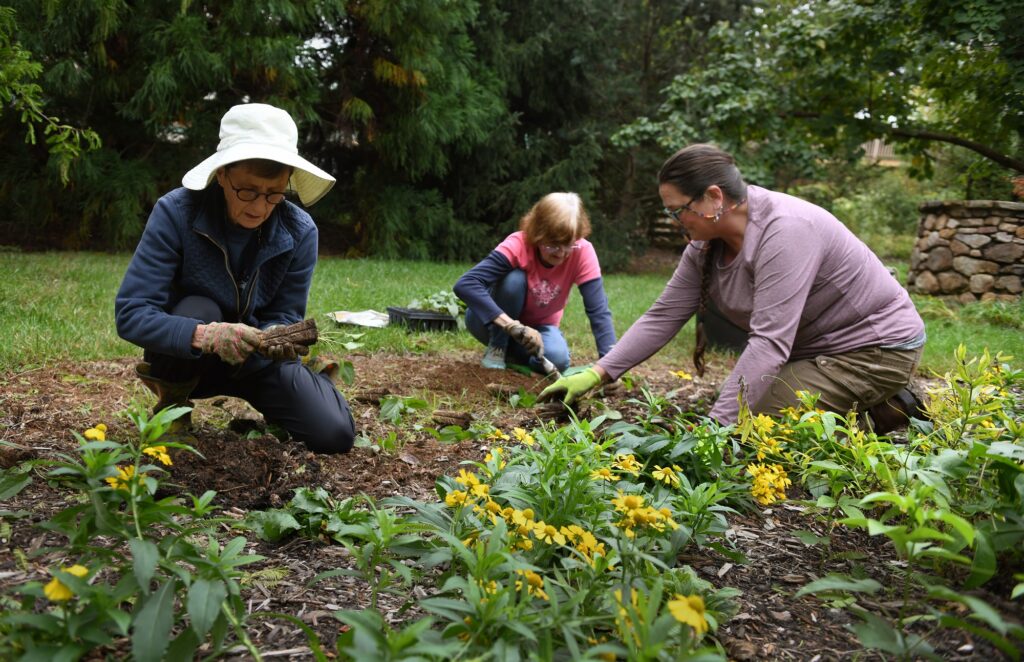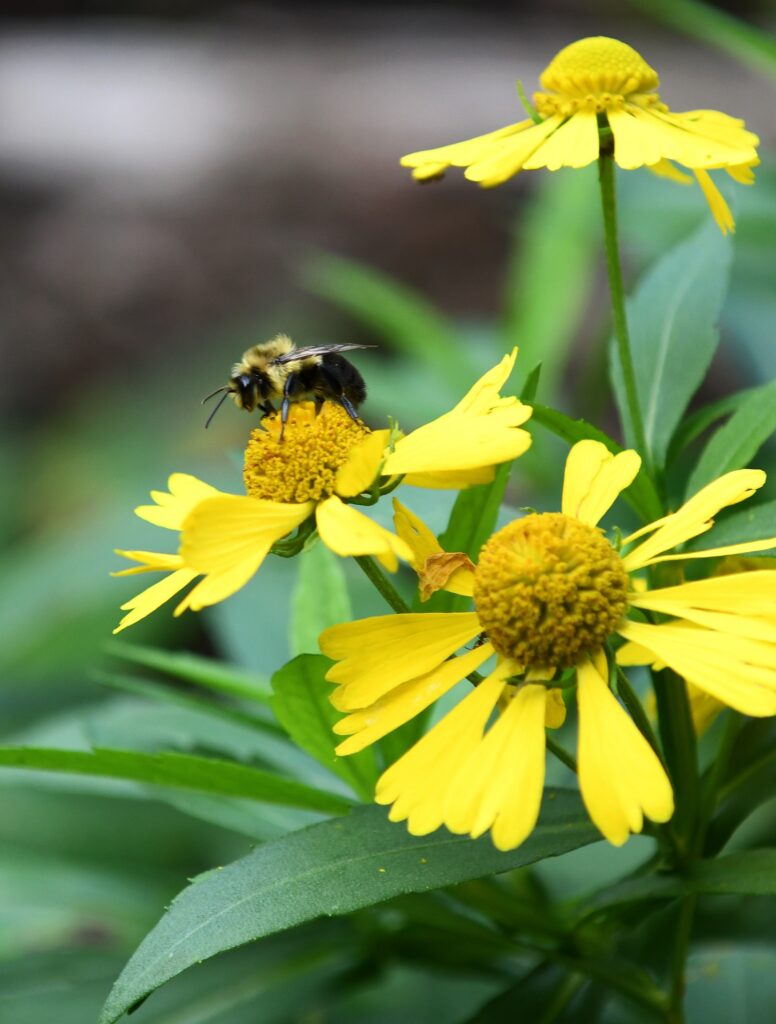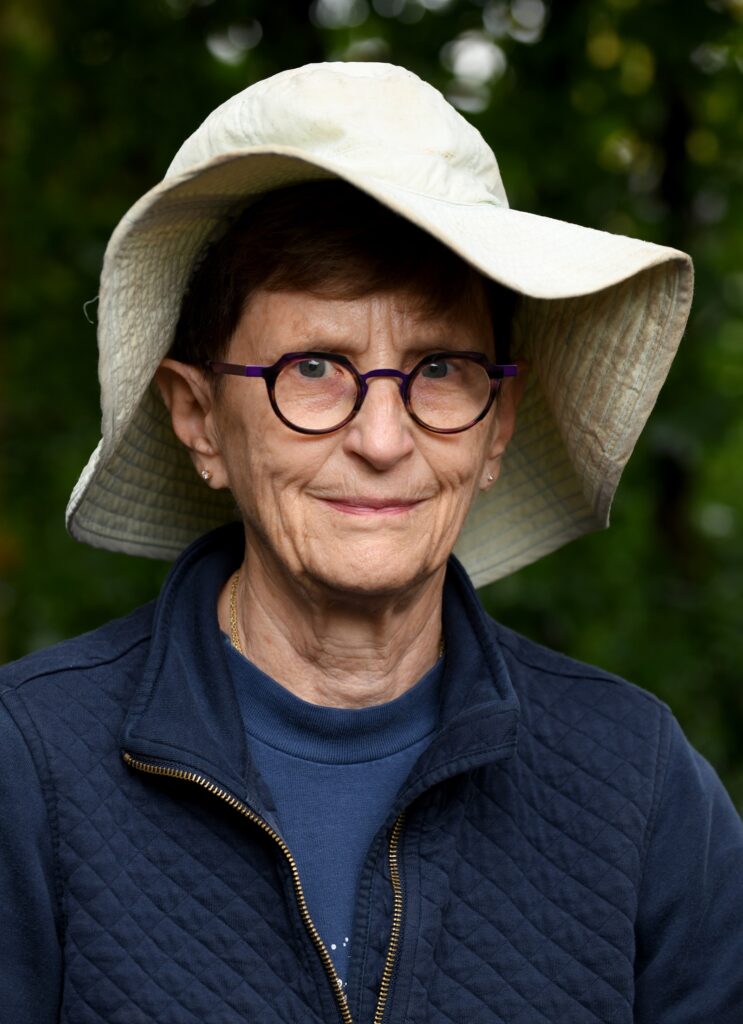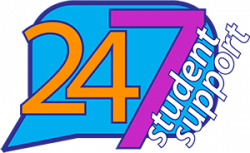By Allison Taylor
As the leaves change and winter approaches, the Community Arboretum continues to grow with the completion of the new Sunny Meadow Native Garden. This latest addition to the two-acre educational garden, located on the campus of Virginia Western Community College, will highlight species of plants that are native to Southwest Virginia and benefit local ecosystems.

“It’s for people to see native plants growing in a garden space, and to see which plants perform well in our area,” said Clark BeCraft, Horticulture Program Head. “That’s what the Community Arboretum is all about. It’s not only a place for beauty and for coming to see the gardens, but it’s also to educate the public about gardening and finding the right plant for the right place.”
Plans for the Sunny Meadow Native Garden began over a year ago, and the plant selection process involved countless hours of research to determine which species would not only thrive in the Arboretum but add to its beauty. Staff, students and volunteers came together in the spring 2024 semester to begin bringing the project to fruition.
The site of the Sunny Meadow Native Garden was previously part of the Conifer Garden. Since the Arboretum’s establishment in 1993, some of the conifers had outgrown their spaces and needed to be thinned, which in turn freed up a sizable patch of space that gets plenty of sunlight.
With help from students of the Horticulture Program, existing plants were transferred to other areas of the Arboretum and a pathway was moved to provide easier access to the new garden.
Local landscape architect Chris Lawrie volunteered his services to design and help install the Sunny Meadow Native Garden. It currently features 15 flowering perennials and six different types of grasses, which not only provide a beautiful backdrop to highlight the flowering plants, but also keep maintenance needs minimal by keeping the weeds down. Lawrie purposefully selected a variety of species with “nice bright colors of oranges and yellows, to hopefully grab some attention from people and pollinators,” he said. “By planting native species, you’re contributing to a healthy native ecosystem.”

Over the past several years, native plants have become increasingly popular as more people become educated about their many ecological benefits, and the garden was designed to be as pollinator friendly as possible. The Arboretum already contained a selection of native plants, but lacked a designated space to showcase native, non-cultivar species only. Cultivars are native plants that have been hybridized to have other characteristics; in contrast, native plants occur naturally without human introduction, according to the National Wildlife Federation. Native plants offer a more sustainable habitat for wildlife than non-native plant species and cultivars, and many native plants are also pollinator plants.
The Sunny Meadow Native Garden hosts many pollinator-friendly plant species such as Brown-Eyed Susans (Rudbeckia triloba), Green-Headed Coneflowers (Rudbeckia laciniata), and Butterfly Weed (Asclepias tuberosa), to name just a few. The native plant species chosen for the garden are aesthetically pleasing and serve an environmental function. Pollinators are not only vital to supporting our region’s diverse ecosystem, but they also directly impact global issues such as food security. According to the U.S. National Park Service, an estimated 90 percent of wild-flowering plants and 75 percent of food crops globally are dependent on successful pollination. However, 40 percent of invertebrate pollinators and 16.5 percent of vertebrate pollinators are facing extinction. Modern threats to their survival include invasive plant species, destruction of habitats, pesticide use and climate change.

Bees may be the first pollinators to come to most people’s minds, but many other wildlife species are also pollinators, including but not limited to: caterpillars, moths, wasps, butterflies, beetles, flies, birds and bats. For one example of how pollinators help sustain wildlife populations, we can consider birds. Pollinator plants that host insects will become a source of larvae; those larvae will become caterpillars, which will be harvested by birds to become food for baby birds still in the fledgling stage, unable to leave their nests.
Many plants native to Southwest Virginia are known to be relatively low maintenance compared to non-native species, which makes them ideal for beginners and casual gardeners. For example, many species are drought-resistant and require minimal fertilizing, watering and mowing.
Arboretum Council Chair and longtime volunteer Claire Privitera is familiar with the positive aspects of native plants and plans to add more to her yard in the future. “Once they’re established, they take care of themselves. After that, they’re self-sufficient,” she said.
Curious prospective gardeners and those who just appreciate spending time in nature are encouraged to come visit the Sunny Meadow Native Garden to see the native species for themselves and possibly get some ideas on how to incorporate native plants into their own landscaping plans.
(This story was published in the Winter 2025 edition of Impact magazine, a publication of the Virginia Western Community College Educational Foundation.)
Bees help biodiversity
In another effort to support pollinators, Virginia Western Community College recently became an affiliate of the Bee Campus USA program, which works to protect and conserve native pollinator species. The Sunny Meadow Native Garden goes hand in hand with the Bee Campus mission of providing and enhancing pollinator habitats. Together, these projects will help increase the biodiversity of our region.
Are you interested in helping support the local pollinator population but unsure where to start? Heather Butler, Science Program Head and facilitator of Virginia Western Community College’s branch of the Bee Campus USA program, offers a simple solution: “Start with one plant. Look up one native plant that you think is interesting or beautiful; plant it, get used to taking care of it, then maybe add a few more. Start small, and just learn as you go.”
Learn more at virginiawestern.edu/bee-campus
Learn more about natives
In addition to the in-person learning opportunities the Arboretum offers, there are plenty of online resources for those looking to expand their knowledge of native plant species. Arboretum staff and volunteers recommended websites such as plantvirginianatives.org, nativeplantfinder.nwf.org and nrvrc.org as good starting points. These databases make it easy to find the best plants for your specific location, as well as offer helpful information on plant care, hardiness zones, landscaping layouts and many other gardening tips.
About the community arboretum
A common misconception is that the Arboretum receives state funding to cover upkeep to the gardens. Actually, it’s generosity from the community that keeps the Arboretum’s programs — and plants — alive and growing.
One way to support the gardens is to join the Friends of the Arboretum program. Support levels begin at $25 for an individual. Perks include a seasonal newsletter filled with horticulture insights and special members-only previews of the popular plant sales.
Fall pansy and perennial sale: late September
This sale is designed to keep area gardens colorful throughout the fall. Offerings include perennials and pansies (including the popular purple wave color) along with houseplants and vegetables.
Poinsettia sale: early December
In addition to poinsettias (which sell out quickly), the sale includes fresh-cut wreaths, centerpieces and swags.
Spring perennial plant sale: late March/early April
In addition to perennials, the sale includes succulents and tropical plants.
Spring bedding and vegetable plant sale: May
This is the biggest plant sale of the year, with offerings that include bedding and vegetable plants, herbs, hanging baskets and ferns.





